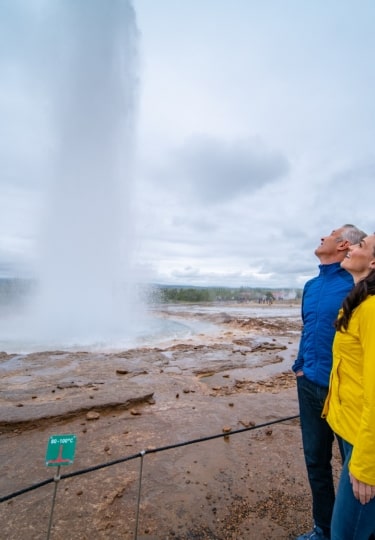Your introduction to Iceland begins in Reykjavik, the country’s capital city and also its largest, where culture comes in many forms.
The National and Saga museums chronicle the country’s Viking history, while modern restaurants and trendy shops create a harmonious balance of old and new influences.
Reykjavik is a great base for exploring nearby attractions such as The Blue Lagoon and the waterfalls at Gullfoss. Iceland’s “Golden Circle” is a scenic driving route that starts and ends in Reykjavik, taking travelers through the country’s most notable sights—like the gushing geysers and cascading waterfalls—with many scenic viewpoints along the way.
Here are some of the top things to do in Reykjavik during your visit.
Explore the City on Foot
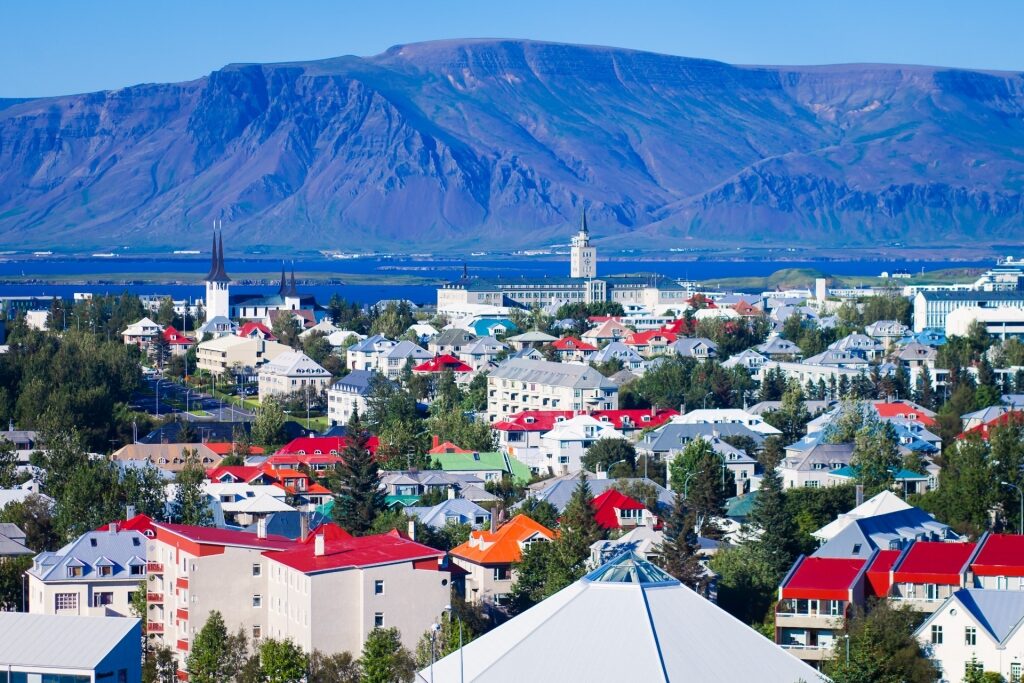
Reykjavik
Reykjavik might be small in terms of size and population, but there are countless ways to experience Iceland’s capital city.
In addition to cultural museums outlining Icelandic history, Downtown Reykjavik has a booming restaurant scene, as well as upscale cocktail bars and designer boutiques.
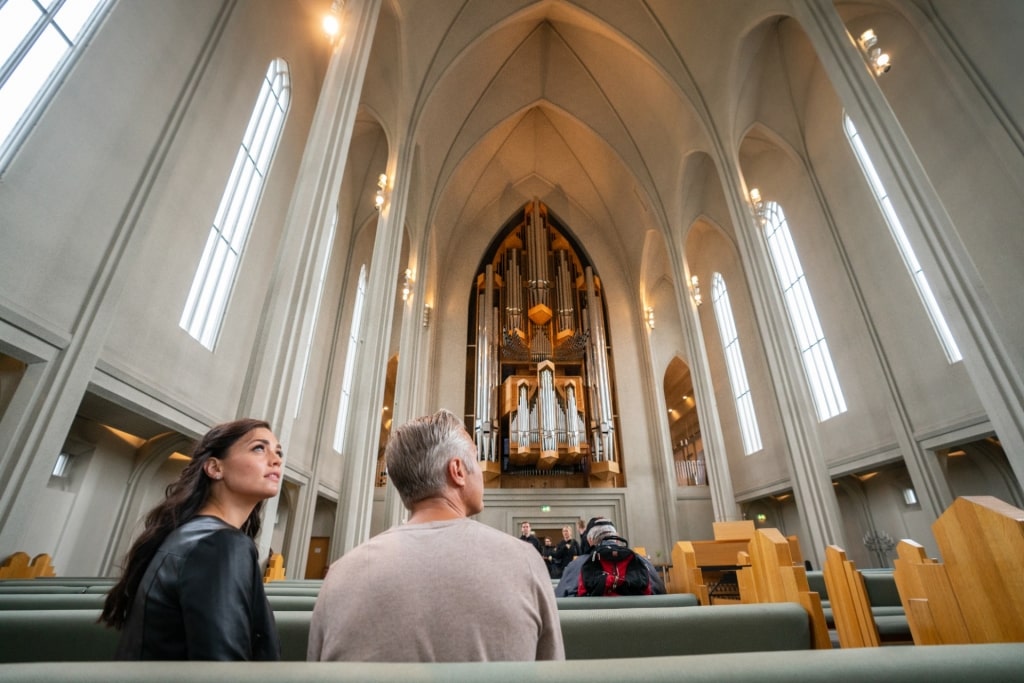
Hallgrimskirkja Church
The Hallgrimskirkja Church is a good starting point for a self-guided wander around town. The church, which doubles as a monument, was designed with elements of Icelandic nature in mind.
The interior is meant to resemble a cave and, compared to the opulent interiors of other European churches, is very simple and stripped down.
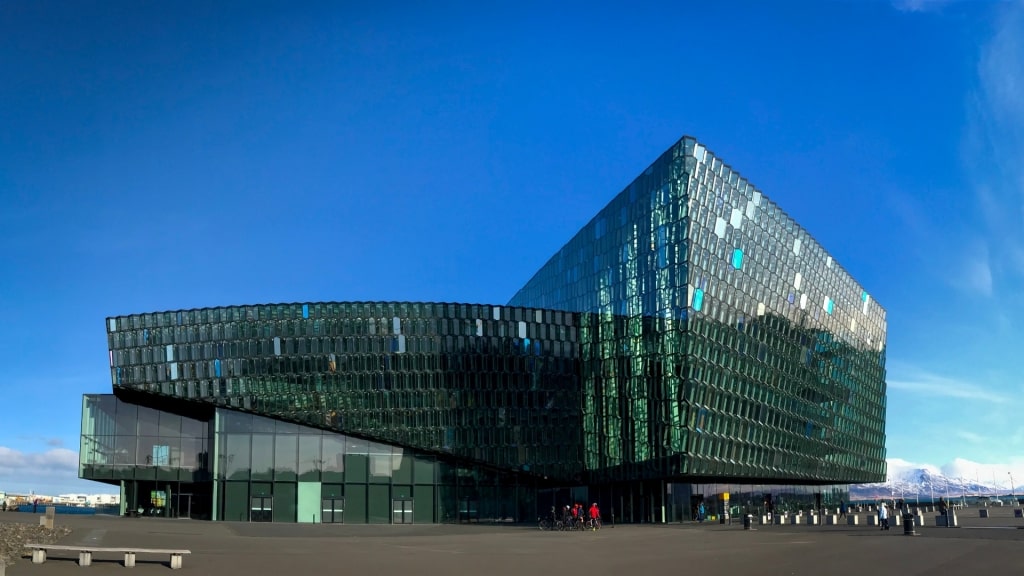
Harpa Concert Hall and Conference Center
After the Hallgrimskirkja Church, the Harpa Concert Hall and Conference Center is the most famous building in Reykjavik.
Constructed between 2007 and 2011 and designed by Henning Larsen Architects in partnership with the Icelandic artist Olafur Eliasson, it’s quite a sight to see.
The Sun Voyager, a modern sculpture located along the seaside near the Harpa Concert Hall, is another great photo stop. Inspired by the Vikings and designed by artist Jón Gunnar Árnason, this graceful steel sculpture was unveiled in 1990, marking the 200th birthday of the city.
Take a Dip in the Blue Lagoon
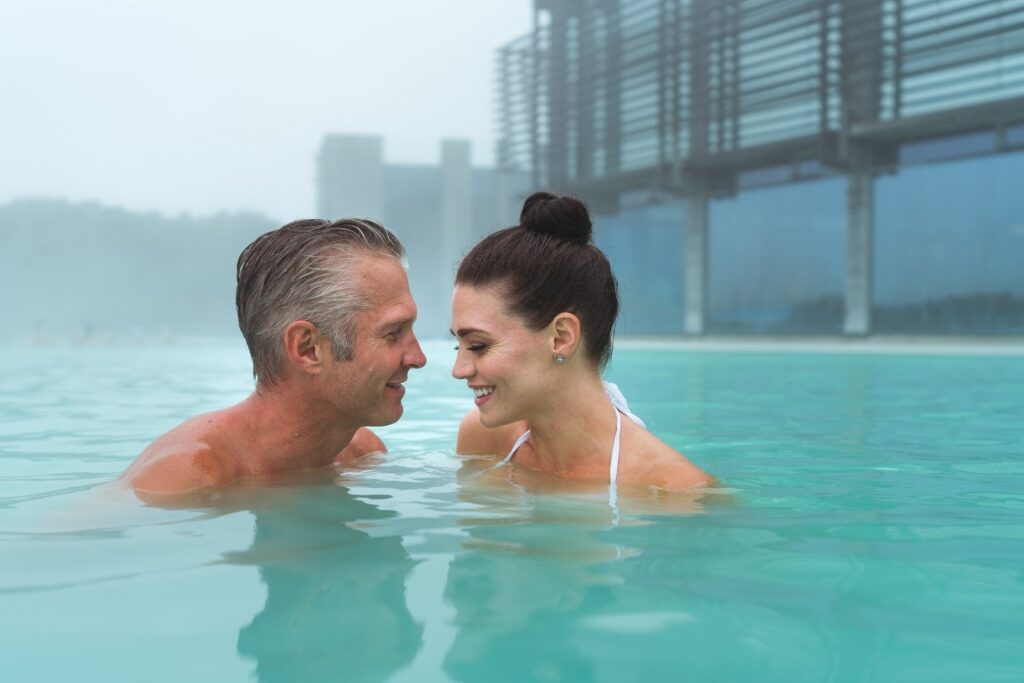
Blue Lagoon
There’s no better place in Iceland to rest, relax, and rejuvenate than the Blue Lagoon. Famed for its healing waters, this geothermal spa should definitely be on your travel bucket list.
Iceland can be chilly even in the summer months, but at the Blue Lagoon, expect year-round lagoon temperatures of 102 degrees Fahrenheit.
The lagoon itself is located on the Reykjanes Peninsula in southwest Iceland. Surrounding the milky blue water are black lava fields, gray moss and brooding volcanoes.
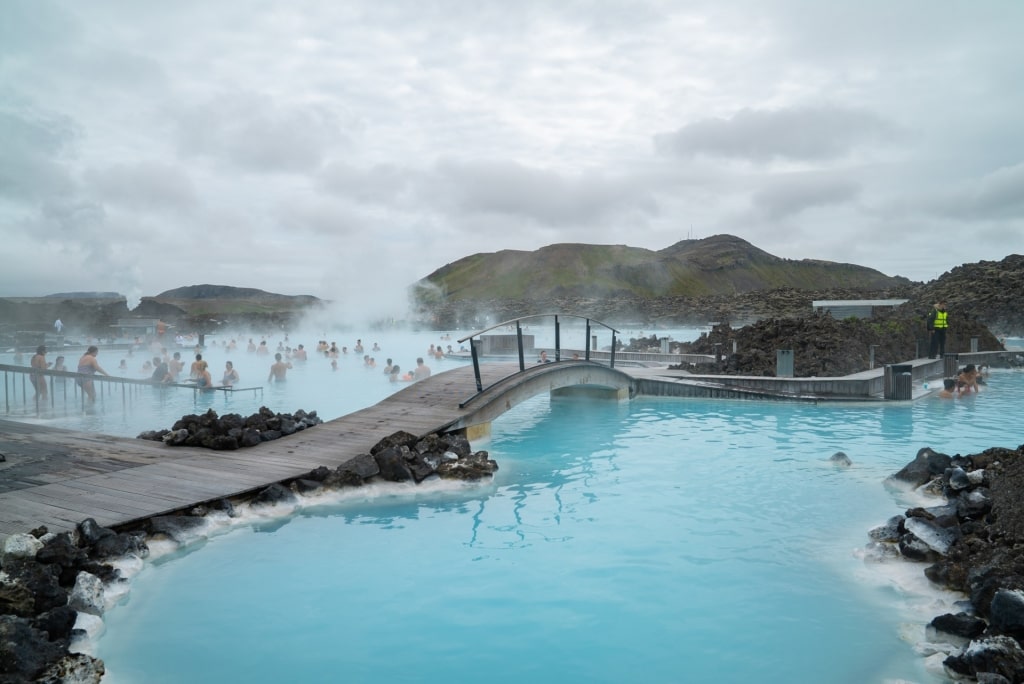
Blue Lagoon
As one of the most beautiful places in Iceland, Blue Lagoon tends to get busy no matter when you visit, so consider getting an early start, or aiming for the last entry of the day.
It’s a good idea to book ahead of time to ensure a space. You’ll be given a silica mud mask to apply, which adds to the experience.
As beautiful as the lagoon is, the real treasure is how good it is for your skin. The seawater in the lagoon renews itself every 48 hours, and is packed with minerals (like silica) that nourish the skin. It even serves as a natural psoriasis treatment.
Walk Through Langjökull Glacier

Langjökull Glacier
Spanning 361 square miles, Langjökull (translating to “Long Glacier’”) is the second-largest glacier in Iceland.
At its thickest point, the ice is 1,903 feet deep. The Langjökull glacier is located in the Highlands and lies over a massif of hyaloclastite mountains.
At thinner parts of the glacier, you can actually see the top of these mountains. Langjökull also covers at least two active volcanic systems.

Langjökull Glacier
There’s a man-made ice tunnel that is open to visitors all year-round, even in the summer months. This is the only place in the world where you can see the inside of a glacier like this, so try to squeeze a visit into your trip. You’ll see natural caverns, massive icicles, and even waterfalls within the glacier.
Many scientists predict that due to climate change, this glacier may cease to exist in as little as 50 years. A visit here is a sobering reminder of how close global warming is to the hearts of the Icelandic people.
View Reykjavik From Above
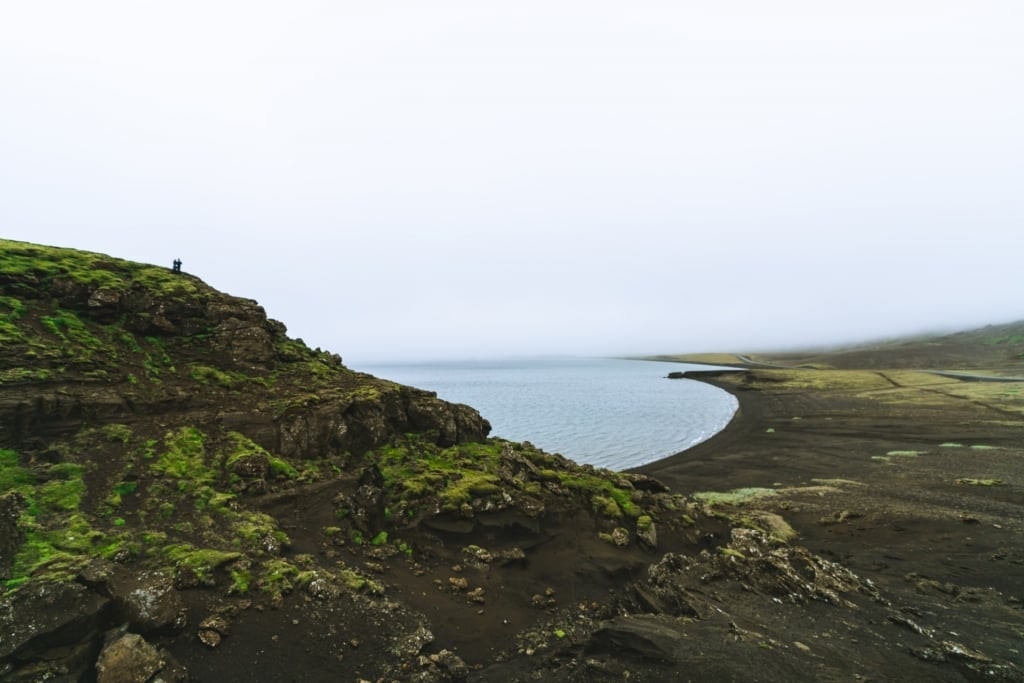
Lake Kleifarvatn
As beautiful a city as Reykjavik is on the ground level, there’s nothing quite like seeing it from high in the sky. Take a helicopter tour that gives you a bird’s-eye view of the many craters of the Reykjanes Peninsula. From the skies, you’ll soar over rugged coastline, the Blue Lagoon, Lake Kleifarvatn, and Lake Graenavatn.
From this vantage point, it’s easy to see why many travelers compare Iceland to the planet Mars. In fact, there’s some truth there. According to studies, Iceland’s basaltic terrain and cold temperatures are the closest thing to ancient Mars that we know of.
Visit Gullfoss Waterfall
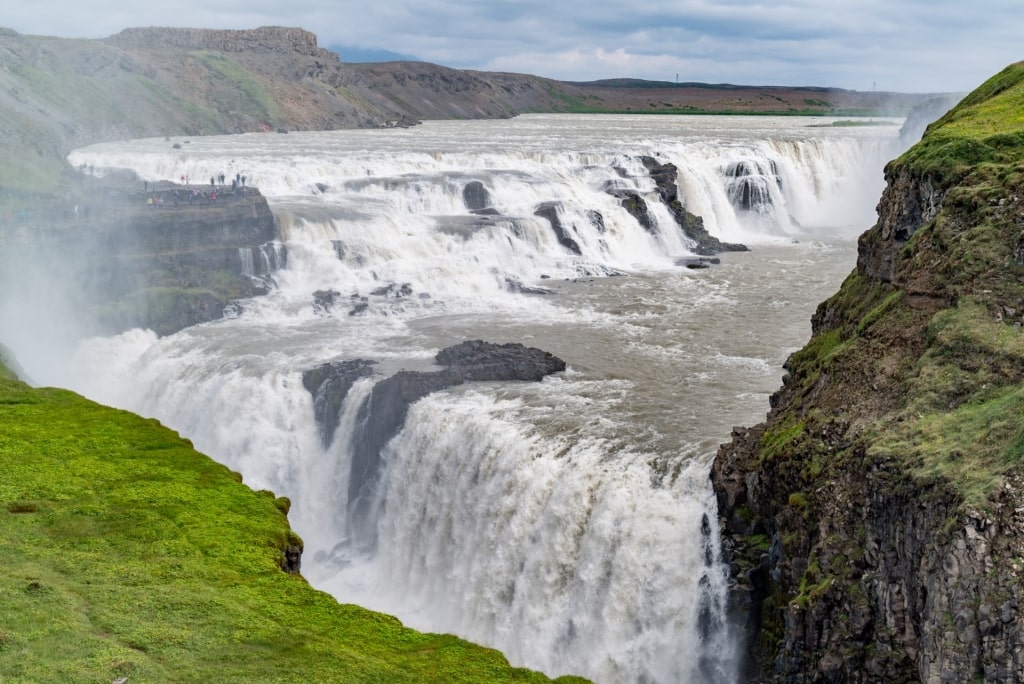
Gullfoss Waterfall
Gullfoss (which means “Golden Falls”) is one of Iceland’s most iconic waterfalls. There are actually two stages of the waterfall: the first drops around 36 feet and the second, 69 feet.
One aspect that is unique to Gullfoss is that you can view the waterfall from above rather than below as it cascades into a narrow ravine. When the sun is shining, you could see rainbows shimmering in the spray, a magical experience.
Go Whale Watching
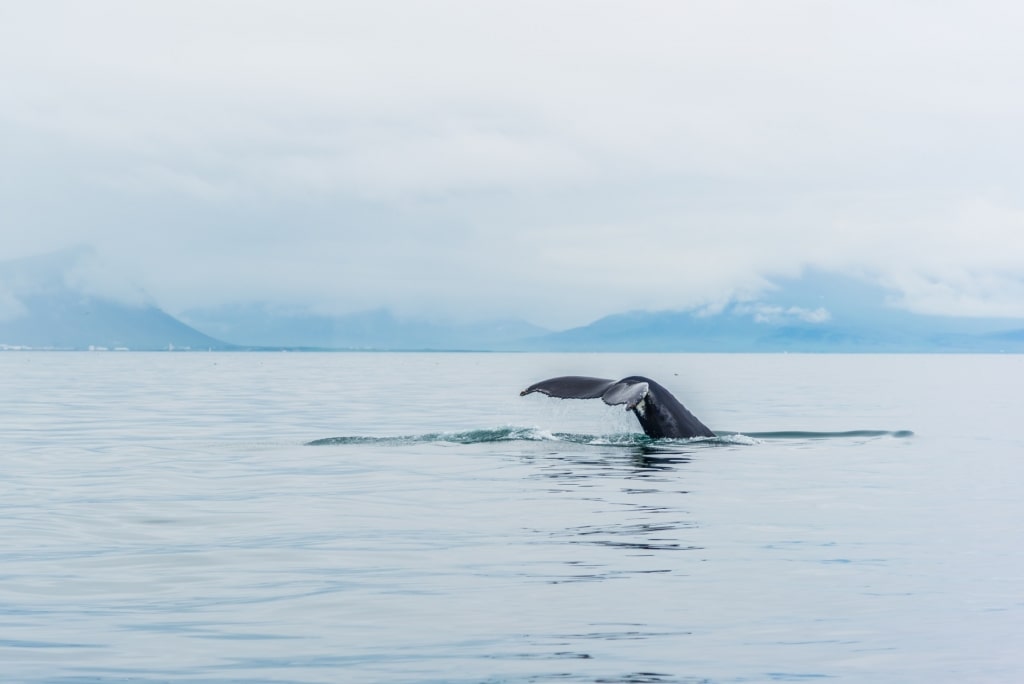
Humpback whale
Reykjavik is considered a prime spot from which to see a variety of whale species. The best months for whale watching off the shores of Iceland are between April and October.
Peak season is June, July and August when the waters are warmer. Chances are high that you’ll spot whales if you’re visiting Iceland in the summer.
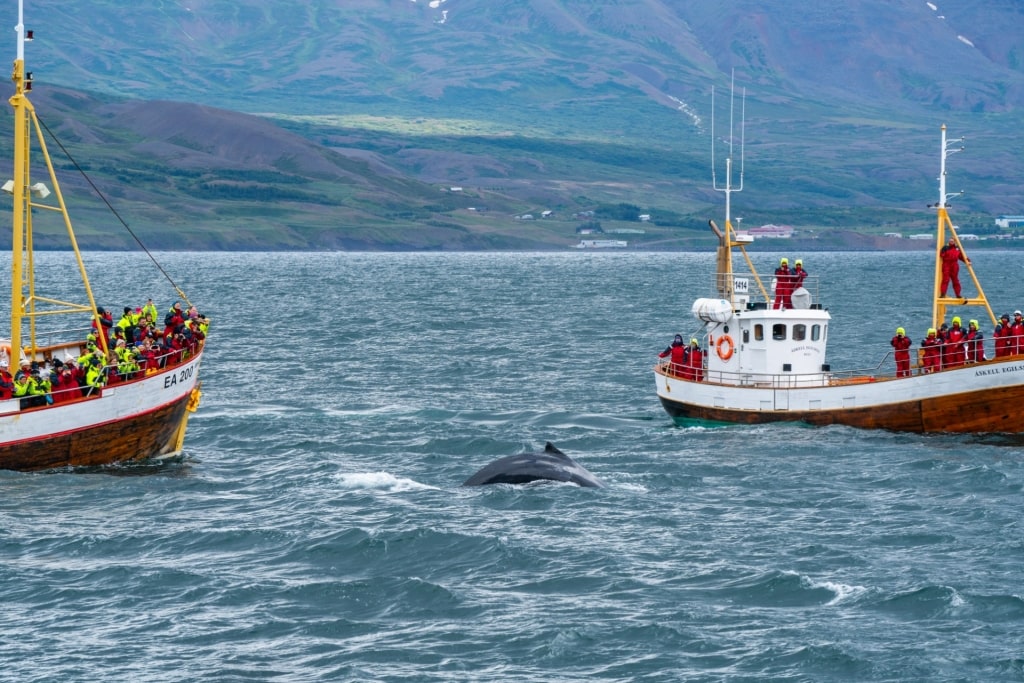
Whale watching tour in Iceland
Whale-watching cruises typically last around three hours, giving participants ample time for a sighting. Look for the distinctive blow of a humpback, the most acrobatic of whales.
They may even breach, or leap right out of the water. You could see black and white orcas, too, speeding just under the surface, distinguished by their tall black dorsal fin.
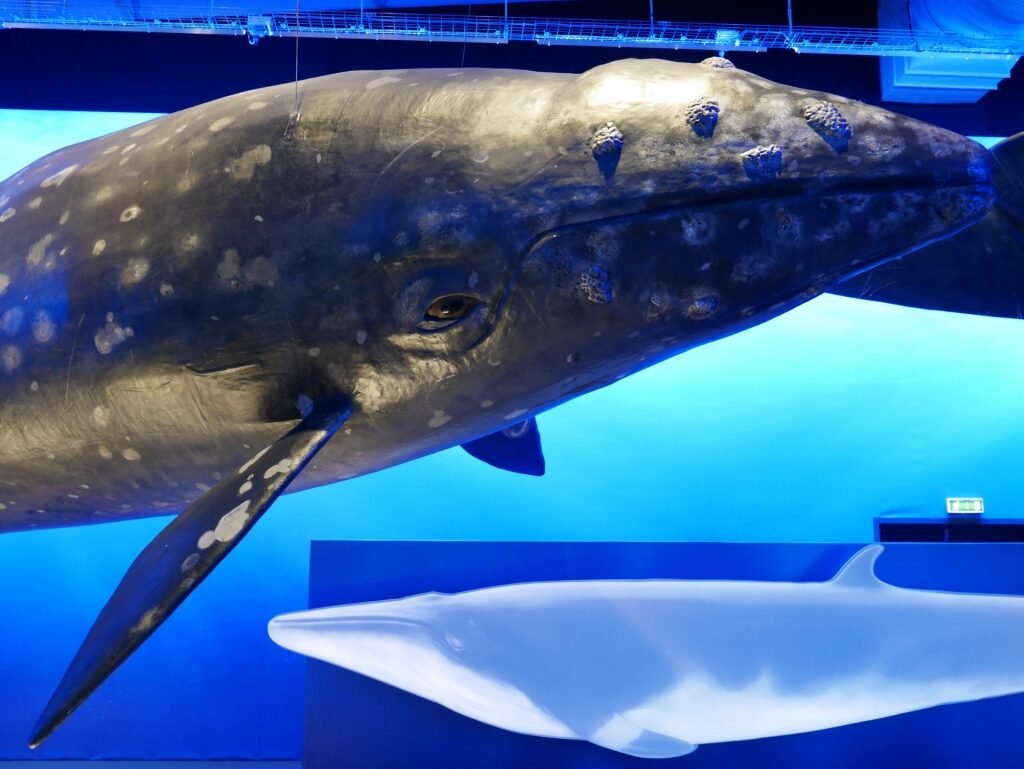
Whales of Iceland Photo by Jessica Simpson on Flickr, licensed under CC BY 2.0
As an alternative to whale watching, you can learn about these marine mammals at Whales of Iceland. This family-friendly attraction features life-sized models of marine environments, with lighting and sound helping to create an immersive underwater experience.
You’ll learn all about Iceland’s most commonly spotted whales, including sperm whales, humpback whales, orcas and dolphin species. The interactive exhibition incorporates technology that allows visitors to track a whale’s movement in real time.
Read: Best Places to See Orcas in the Wild
Museum Hop in Reykjavik

Viking Saga Museum Photo by Klaus Nahr on Flickr, licensed under CC BY-SA 2.0
Museums are a great way to learn about Reykjavik’s history and culture, so don’t just save one for a rainy day.
The Viking Saga Museum recreates some of the country’s most monumental moments throughout history using wax figures. The self-guided audio tour allows visitors to explore the exhibits at their own pace. At the end, you can even dress up in traditional Viking clothing.
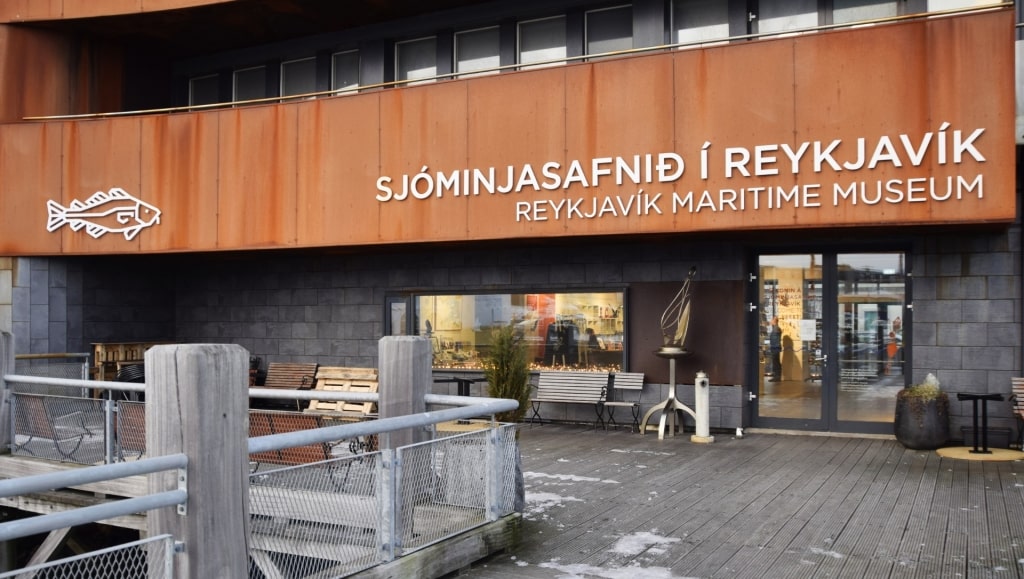
Maritime Museum Photo by Mosbatho on Wikimedia Commons, licensed under CC BY 4.0
A visit to the Maritime Museum has an exhibition about the history of sailing in Iceland. The building itself was formerly a fish freezing factory at Reykjavik’s Old Harbour, before later being converted into a museum in 2005.
Another exhibit highlights how technological advances throughout the 20th century have helped transform Iceland’s fishing industry as a whole. Outside the museum is a coast guard vessel that was used in all three of the “Cod Wars” between Iceland and the United Kingdom in the 1960s and 1970s.
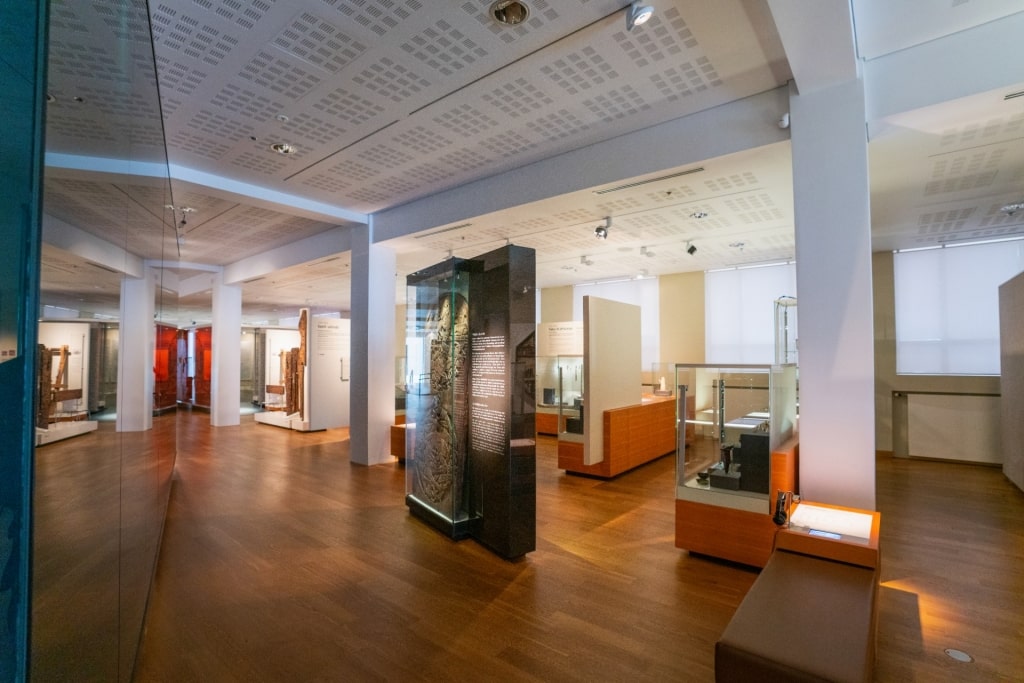
National Museum of Iceland
A visit to the National Museum of Iceland is one of the best things to do in Reykjavik and will help you understand the importance of respecting the natural landscape, preserving the glaciers, and the mythology of how the city came to be.
You’ll glean understanding about everything from medieval Viking settlements to Iceland’s most noteworthy contemporary artists. One of the most interesting exhibits is the Valthjófsstadur door, an ancient door that depicts scenes from a knight’s tale and dates back to the 12th century.
Snap a Photo at the Geysir Hot Springs
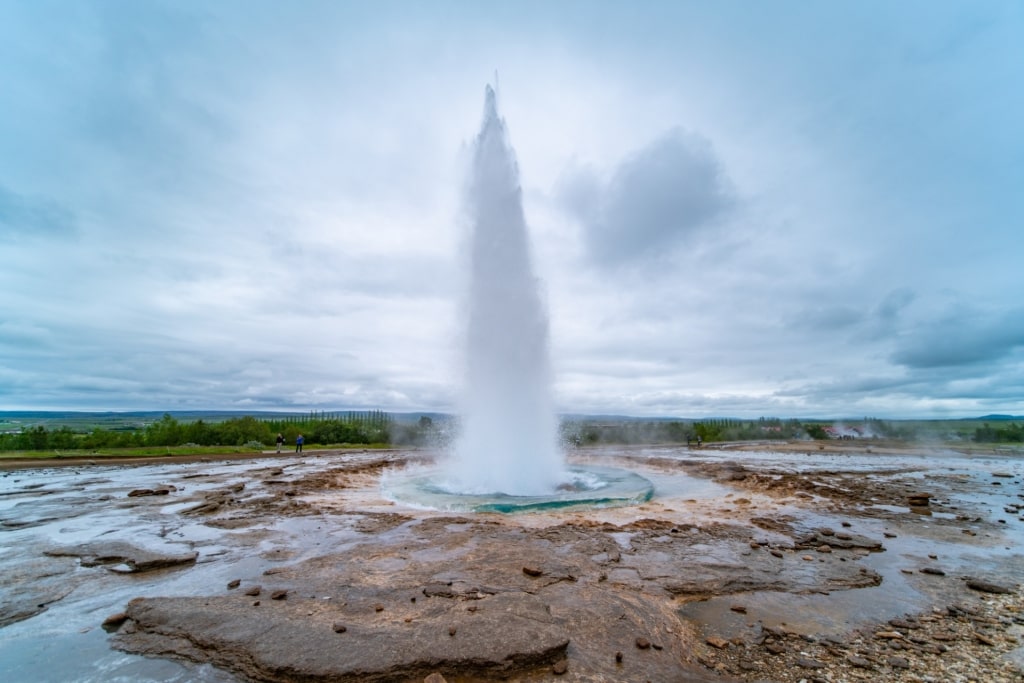
Geysir Hot Springs
The drive to the Geysir Hot Spring Area takes less than two hours from Reykjavik, making it an easy visit on a tour that covers Iceland’s many natural wonders.
These days, the geyser is mostly inactive, but the area in general—Haukadalur Valley—is home to many Icelandic hot springs and geysers. One of these includes Strokkur, Iceland’s most famous geyser, which shoots hot water 100 feet into the air every few minutes. You can also see Smiður and Litli-Strokkur.
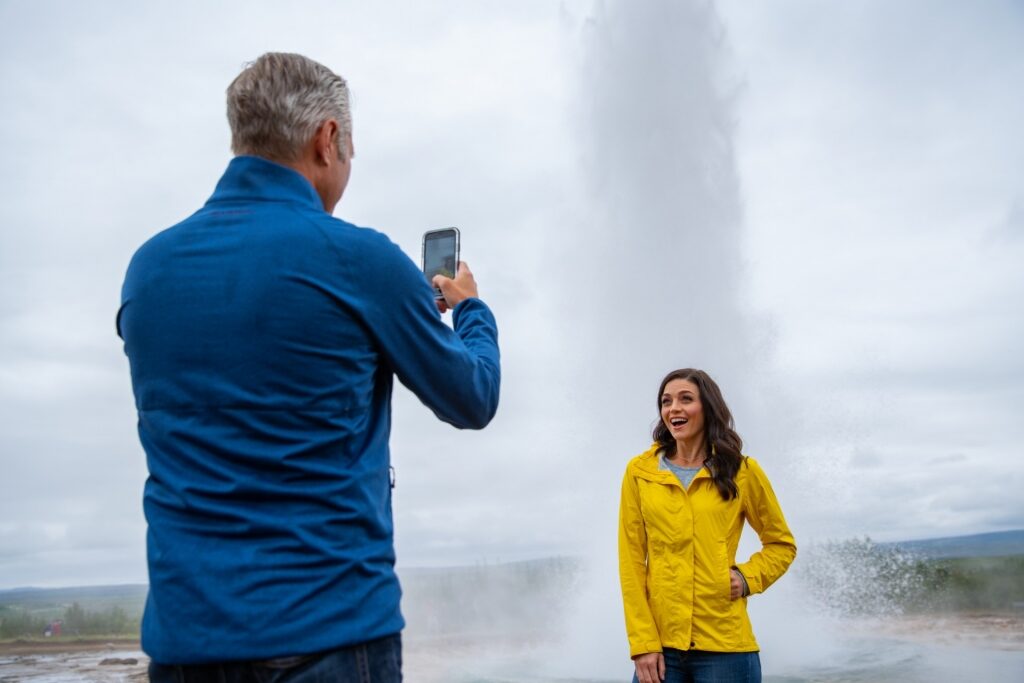
Geysir Hot Springs
Wondering how and why geysers erupt? It all has to do with the plumbing system underground. When groundwater and hot bedrock come into contact, the water heats up and builds pressure.
When the water reaches a certain peak temperature, the pressure becomes too much and the geyser erupts into the air.
Wander Through Thingvellir National Park
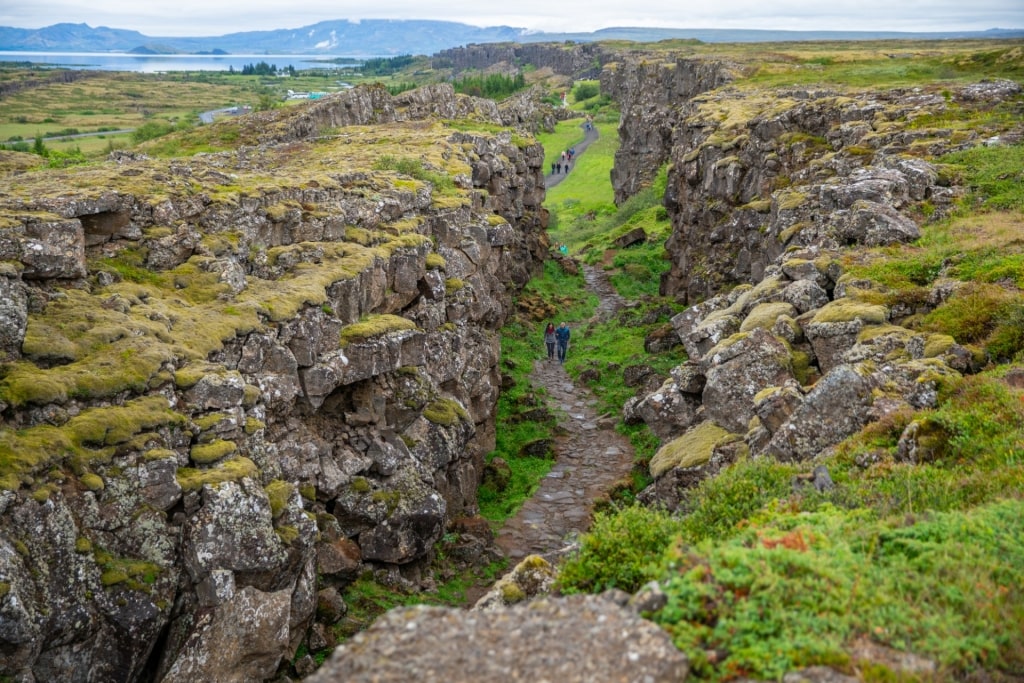
Thingvellir National Park
A walk through Thingvellir National Park takes you through a range of terrain, from cascading waterfalls and deep ravines to volcanic cracks and tectonic plates. With so much to see and do within the national park, consider choosing one activity for the day.
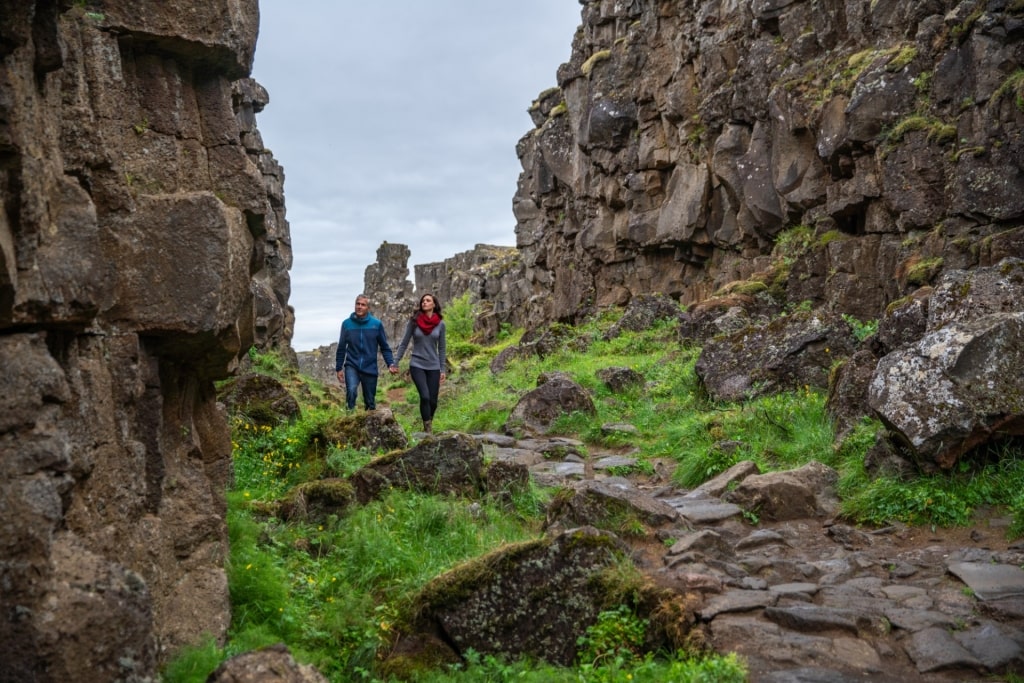
Thingvellir National Park
Ever wanted to be in two places at once? Now you can. One of the most unique activities within Thingvellir National Park is walking between the two tectonic plates at Almannagja, the boundary of the mid-Atlantic rift.
From the gorge, you can see the cliffs marking the edges of two continents jutting out from the Earth’s crust. Walking between them, contemplating the significance of this, is an almost surreal experience.
Snorkel the Silfra Fissure
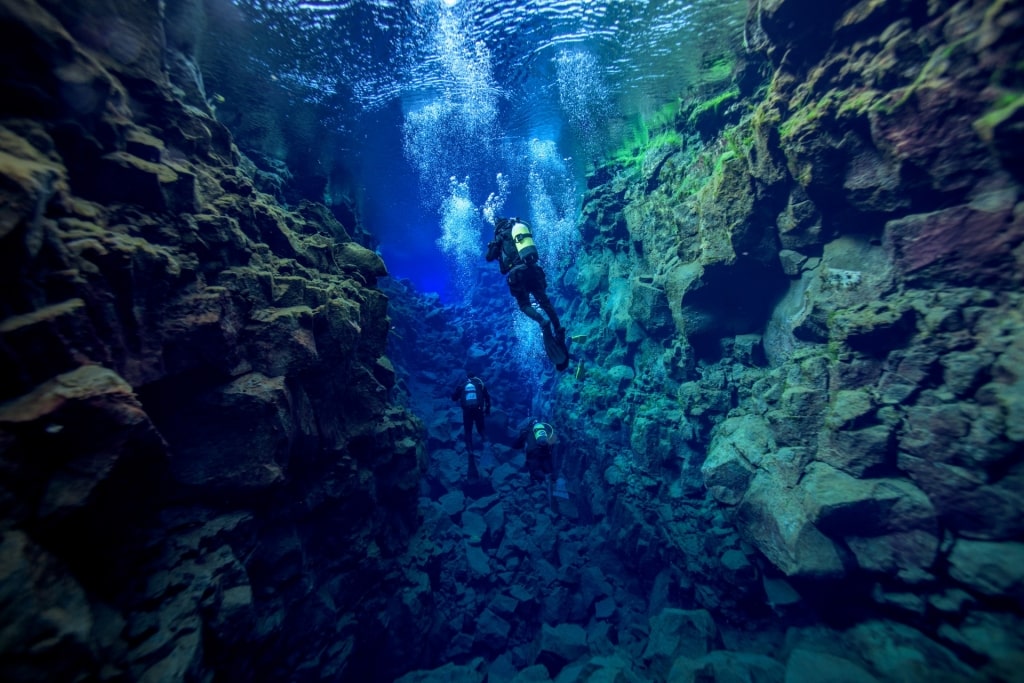
Silfra Fissure
An unusual and exciting activity from Reykjavik is to snorkel or scuba dive in Silfra Fissure, about an hour from the city. The fissure was created in 1789 by the separation of the North American and Eurasian tectonic plates and is filled with meltwater from the Langjökull glacier.
Because the water has been filtered through the volcanic rock, it has an astonishing purity and clarity, often of more than 300 feet. As such, this is considered one of the best diving spots in the world.
You’ll feel as though you are flying over the canyon walls and floor, hundreds of feet below, the sunlight shimmering on the rock walls as it filters through the water.
Snorkel tours take about 40 minutes and you’ll be kitted out in a dry suit as it’s too cold to enter the water without one. You’ll need to be a confident swimmer. Your snorkel guide will make sure to get a shot of you suspended in the water, between two continents.
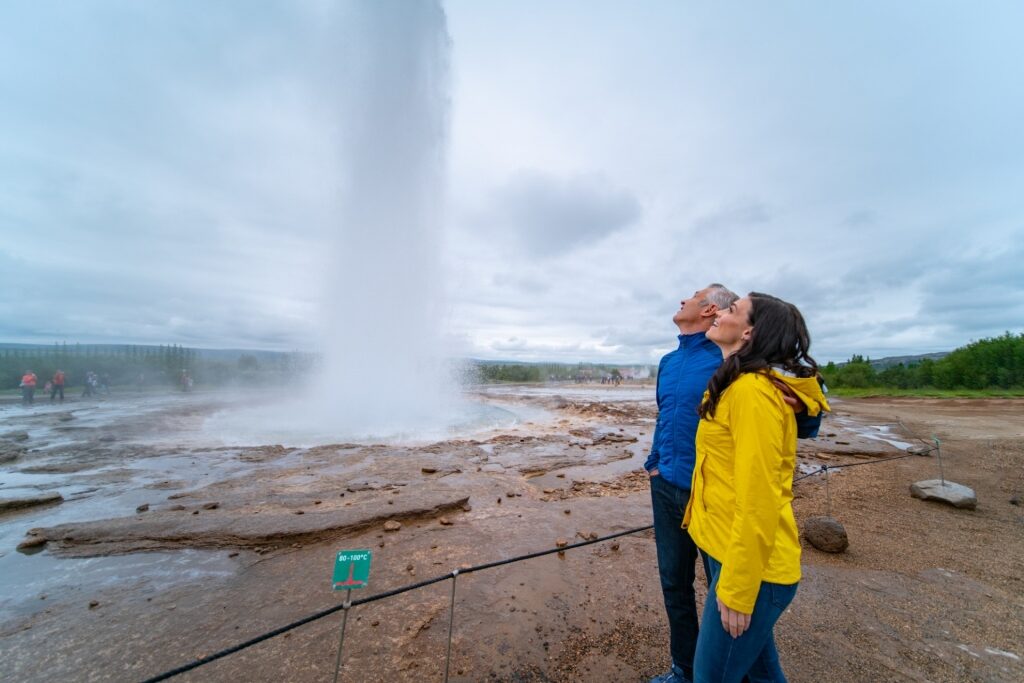
Geysir Hot Springs
Discover the extraordinary history and culture of the city on a cruise to Reykjavik. Browse cruise itineraries online and start planning your next unforgettable vacation.
